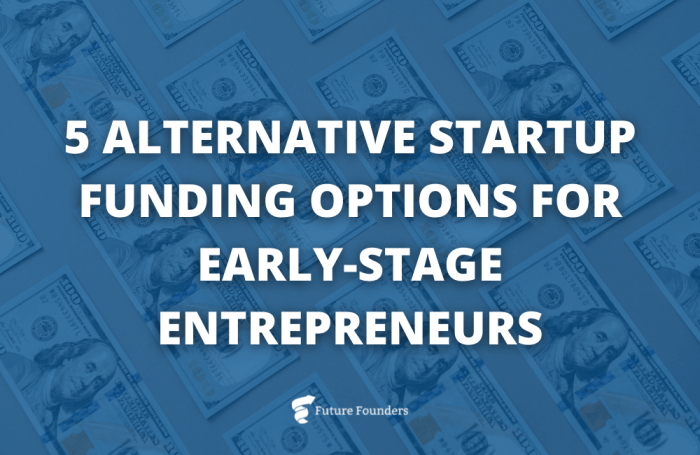The best funding options for late stage startups are not always the most obvious. While traditional sources like venture capital (VC) and private equity (PE) may be top of mind, other avenues like debt financing, strategic partnerships, and even alternative funding sources can play a crucial role in securing the capital needed for continued growth and expansion. This guide delves into the different funding options available for late-stage startups, exploring their pros and cons, and providing insights to help you navigate the complex landscape of funding for your business.
Late-stage startups are characterized by a proven track record of success, a strong team, and a clear vision for the future. They have typically overcome the initial hurdles of product development and market validation and are now focused on scaling their operations, expanding into new markets, and achieving significant market share. This stage requires significant financial resources, making it crucial to choose the right funding options that align with the company’s specific needs and goals.
Alternative Funding Sources
Late-stage startups, those beyond the seed and Series A funding rounds, often find themselves seeking alternative funding sources to fuel their growth and expansion. Traditional venture capital (VC) and private equity (PE) investments might become less appealing as startups mature and require larger investments, making alternative funding options a valuable consideration.
These alternative funding sources offer unique advantages, such as less stringent requirements, greater flexibility, and a focus on specific industry needs. They can provide late-stage startups with the capital they need to scale their operations, enter new markets, or acquire strategic assets.
Revenue-Based Financing
Revenue-based financing (RBF) has emerged as a popular alternative for late-stage startups. This financing model allows companies to raise capital based on a percentage of their future revenue. RBF providers typically offer flexible terms and require less equity than traditional VC or PE investments.
- Advantages: RBF offers a less dilutive option compared to equity financing, allowing startups to retain more ownership and control. It also provides a simpler and faster funding process, with less stringent requirements and fewer paperwork. The funding is tied to revenue, making it a more risk-averse approach for investors.
- Disadvantages: RBF can be expensive, with higher interest rates than traditional loans. It also requires startups to share a portion of their revenue, potentially impacting profitability. The terms of the agreement can be complex and may require careful negotiation.
Examples of successful late-stage startups that have utilized RBF include:
- Shopify: The e-commerce platform utilized RBF in its early stages, allowing it to scale its operations without diluting its equity.
- Zoom: The video conferencing company used RBF to fuel its rapid growth during the COVID-19 pandemic.
Debt Financing
Debt financing involves borrowing money from lenders, such as banks or private debt funds, with the promise of repayment with interest. Late-stage startups with strong revenue and cash flow can access debt financing to fund specific projects or acquisitions.
- Advantages: Debt financing offers a predictable cost of capital, with fixed interest rates and repayment schedules. It also provides greater flexibility in terms of using the funds, as there are usually fewer restrictions compared to equity financing.
- Disadvantages: Debt financing requires regular interest payments, which can impact profitability. Startups need to maintain a healthy cash flow to ensure timely repayments. Defaulting on debt can lead to financial distress and even bankruptcy.
Examples of late-stage startups that have utilized debt financing include:
- Tesla: The electric vehicle manufacturer secured billions of dollars in debt financing to fund its expansion and product development.
- Airbnb: The short-term rental platform used debt financing to navigate through the pandemic and maintain its operations.
Crowdfunding
Crowdfunding allows startups to raise capital from a large number of individuals, typically through online platforms. This approach can be particularly beneficial for late-stage startups seeking to engage their community and generate buzz around their products or services.
- Advantages: Crowdfunding can be a powerful tool for marketing and building brand awareness. It also allows startups to connect with their target audience and gather valuable feedback. The funds raised can be used for specific projects or initiatives.
- Disadvantages: Crowdfunding campaigns require significant effort and resources to manage. The amount of funding raised can be unpredictable, and it may not be sufficient for large-scale projects. There are also regulatory considerations and potential risks associated with crowdfunding platforms.
Examples of successful late-stage startups that have utilized crowdfunding include:
- Pebble: The smartwatch company raised millions of dollars through Kickstarter to fund its product development.
- Ouya: The gaming console company used crowdfunding to launch its product and gain early market traction.
Strategic Partnerships
Late-stage startups can form strategic partnerships with larger companies to access funding, resources, and market access. These partnerships can involve joint ventures, licensing agreements, or equity investments.
- Advantages: Strategic partnerships can provide startups with access to valuable resources, including technology, distribution channels, and customer base. They can also offer mentorship and guidance from experienced executives.
- Disadvantages: Partnerships can be complex and require careful negotiation. They may involve giving up some control over the startup’s operations. It is important to choose partners that align with the startup’s vision and values.
Examples of late-stage startups that have utilized strategic partnerships include:
- Spotify: The music streaming service partnered with various record labels to secure access to a vast library of music.
- Uber: The ride-hailing company formed partnerships with automakers to integrate its services with their vehicles.
Factors to Consider When Choosing Funding: The Best Funding Options For Late Stage Startups
Late-stage startups have already proven their concept and built a solid foundation. Now, the focus shifts towards scaling and achieving sustainable growth. This stage demands a strategic approach to funding, ensuring the chosen option aligns with the company’s long-term goals and growth trajectory.
Funding Alignment with Long-Term Goals, The best funding options for late stage startups
Aligning funding with the company’s long-term goals is crucial. This involves considering the following factors:
- Growth Strategy: Funding should support the company’s specific growth strategy. For example, if the goal is to expand into new markets, the funding should cover marketing, sales, and operational costs associated with this expansion.
- Timeline: The funding should provide enough runway to execute the company’s strategy within a realistic timeframe. This involves evaluating the company’s burn rate and projecting future expenses to determine the required funding amount and duration.
- Exit Strategy: Consider the desired exit strategy and whether the chosen funding option aligns with it. For example, if the goal is an IPO, the funding should be structured to attract investors who support this long-term vision.
Evaluating Funding Options
Evaluating different funding options requires a thorough assessment to determine the best fit for the company’s specific needs.
- Funding Source: Evaluate the reputation and track record of potential investors or lenders. Assess their experience with late-stage startups and their alignment with the company’s vision and values.
- Funding Structure: Analyze the terms of the funding agreement, including equity dilution, interest rates, and repayment terms. Ensure the terms are favorable and do not create undue financial burdens or limitations on the company’s operations.
- Valuation: Determine the company’s current valuation and ensure it aligns with the funding terms. A fair valuation is essential for attracting investors and securing favorable terms.
- Due Diligence: Conduct thorough due diligence on potential investors or lenders, including reviewing their financials, references, and past investments. This helps to mitigate risks and ensure a reliable partnership.
Checklist for Evaluating Funding Options
To facilitate a comprehensive evaluation process, consider the following questions:
- What are the specific funding needs and goals?
- What are the available funding options?
- What are the terms and conditions of each option?
- What are the potential risks and rewards of each option?
- How does each option align with the company’s long-term goals and exit strategy?
- What are the potential impacts of each option on the company’s operations, financials, and control?
Choosing the best funding option for your late-stage startup requires careful consideration of your company’s specific needs, financial situation, and long-term goals. While VC and PE funding remain popular choices, exploring other options like debt financing, strategic partnerships, and alternative funding sources can provide valuable alternatives. By understanding the intricacies of each funding option and aligning your choices with your business strategy, you can position your late-stage startup for continued success and long-term growth.
Late-stage startups, with their proven traction and robust business models, often seek funding options that can scale their operations. One strategy that has gained popularity is a shift from a “fohm to saintly” approach, as outlined in this insightful article , which advocates for a more sustainable and ethical approach to business growth. This shift can attract investors who prioritize responsible practices, ultimately contributing to a stronger foundation for long-term success.
 Standi Techno News
Standi Techno News

